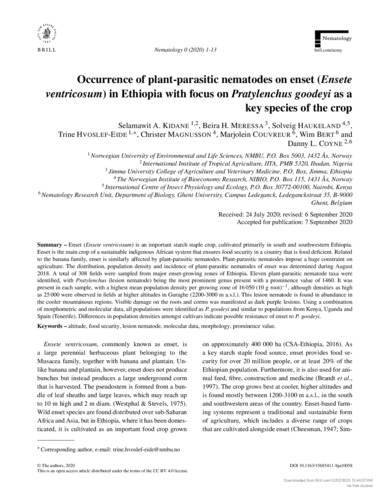Occurrence of plant-parasitic nematodes on enset (Ensete ventricosum) in Ethiopia with focus on Pratylenchus goodeyi as a key species of the crop
Abstract
Enset (Ensete ventricosum) is an important starch staple crop, cultivated primarily in south and southwestern Ethiopia. Enset is the main crop of a sustainable indigenous African system that ensures food security in a country that is food deficient. Related to the banana family, enset is similarly affected by plant-parasitic nematodes. Plant-parasitic nematodes impose a huge constraint on agriculture. The distribution, population density and incidence of plant-parasitic nematodes of enset was determined during August 2018. A total of 308 fields were sampled from major enset-growing zones of Ethiopia. Eleven plant-parasitic nematode taxa were identified, with Pratylenchus (lesion nematode) being the most prominent genus present with a prominence value of 1460. It was present in each sample, with a highest mean population density per growing zone of 16 050 (10 g root)−1, although densities as high as 25 000 were observed in fields at higher altitudes in Guraghe (2200-3000 m a.s.l.). This lesion nematode is found in abundance in the cooler mountainous regions. Visible damage on the roots and corms was manifested as dark purple lesions. Using a combination of morphometric and molecular data, all populations were identified as P. goodeyi and similar to populations from Kenya, Uganda and Spain (Tenerife). Differences in population densities amongst cultivars indicate possible resistance of enset to P. goodeyi.

